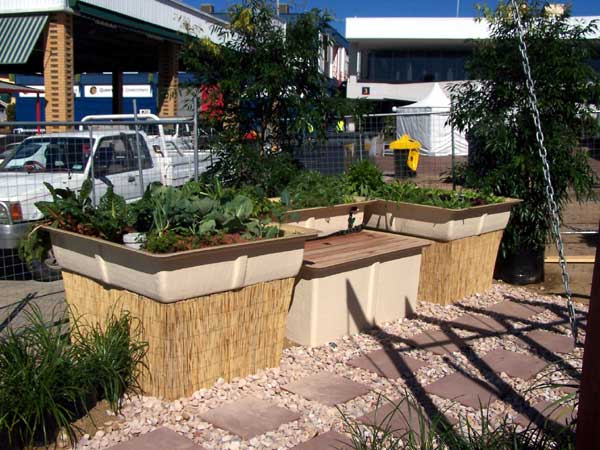Each plant will go in its own pot, and the pots are then kept in a deep tray or other water-tight container that...
Aquaponic Growing Containers
Label:
302,
aquaculture,
Aquaponics,
bed,
design,
diy,
farm,
farming,
fish,
fishless,
greenhouse,
grow,
hydroponics,
kit,
plants,
tank,
vertical
And 0
komentar
Aquaponics Fish Tank Plumbing
Label:
302,
aquaculture,
Aquaponics,
bed,
design,
diy,
farm,
farming,
fish,
fishless,
greenhouse,
grow,
hydroponics,
kit,
plants,
tank,
vertical
And 0
komentar
Education. at practical aquaponics, we have a range of information suitable for the novice to the expert. browse...
Diy Aquaponics Guide For Bell Siphons & Loop Siphons
Label:
302,
aquaculture,
Aquaponics,
bed,
design,
diy,
farm,
farming,
fish,
fishless,
greenhouse,
grow,
hydroponics,
kit,
plants,
tank,
vertical
And 0
komentar
A bell siphon is an automatic siphon that allows you to completely fill and then drain a grow bed on a timer. the...
Diy Aquaponics India
Label:
302,
aquaculture,
Aquaponics,
bed,
design,
diy,
farm,
farming,
fish,
fishless,
greenhouse,
grow,
hydroponics,
kit,
plants,
tank,
vertical
And 0
komentar

Dec 11, 2017 - explore deepti s krishnan's board "aquaponics diy", followed by 123 people on pinterest. see more...
Build Aquaponics Raft
Label:
302,
aquaculture,
Aquaponics,
bed,
design,
diy,
farm,
farming,
fish,
fishless,
greenhouse,
grow,
hydroponics,
kit,
plants,
tank,
vertical
And 0
komentar

Dr. rakocy at the university of the virgin islands (uvi) was the first person to develop an aquaponic raft system...
Organic Aquaponic Seeds
Label:
302,
aquaculture,
Aquaponics,
bed,
design,
diy,
farm,
farming,
fish,
fishless,
greenhouse,
grow,
hydroponics,
kit,
plants,
tank,
vertical
And 0
komentar

The bag includes enough seed to start a robust farm-garden capable of providing nutritionally balanced food. despite...
Aquaponics System Grants
Label:
302,
aquaculture,
Aquaponics,
bed,
design,
diy,
farm,
farming,
fish,
fishless,
greenhouse,
grow,
hydroponics,
kit,
plants,
tank,
vertical
And 0
komentar

The aquaponics association offers micro-grants of up to $1,000 to help aquaponic farmers increase public awareness...
Aquaponics Kits Brisbane
Label:
302,
aquaculture,
Aquaponics,
bed,
design,
diy,
farm,
farming,
fish,
fishless,
greenhouse,
grow,
hydroponics,
kit,
plants,
tank,
vertical
And 0
komentar

Education. at practical aquaponics, we have a range of information suitable for the novice to the expert. browse...
Aquaponic System Plans Pdf
Label:
302,
aquaculture,
Aquaponics,
bed,
design,
diy,
farm,
farming,
fish,
fishless,
greenhouse,
grow,
hydroponics,
kit,
plants,
tank,
vertical
And 0
komentar
The aquaponics system is actually the integration system of two waste product. the aquaponics system can be ranged...
Aquaponic Farm New York
Label:
302,
aquaculture,
Aquaponics,
bed,
design,
diy,
farm,
farming,
fish,
fishless,
greenhouse,
grow,
hydroponics,
kit,
plants,
tank,
vertical
And 0
komentar
The 2,500-square-foot farm she has created acts as a community space of sorts. students regularly visit oko farms...
Backyard Aquaponic Systems
Label:
302,
aquaculture,
Aquaponics,
bed,
design,
diy,
farm,
farming,
fish,
fishless,
greenhouse,
grow,
hydroponics,
kit,
plants,
tank,
vertical
And 0
komentar

G'day folks. here are 3 of the easiest diy aquaponics systems configurations you can build yourself. all of these...
Aquaponics Fish Tank Grow Bed Ratio
Label:
302,
aquaculture,
Aquaponics,
bed,
design,
diy,
farm,
farming,
fish,
fishless,
greenhouse,
grow,
hydroponics,
kit,
plants,
tank,
vertical
And 0
komentar

The school of aquaponics want extra aquaponics content? visit our school for more.don't know where to start?enroll...
Ibc Aquaponics South Africa
Label:
302,
aquaculture,
Aquaponics,
bed,
design,
diy,
farm,
farming,
fish,
fishless,
greenhouse,
grow,
hydroponics,
kit,
plants,
tank,
vertical
And 0
komentar

Here’s an excellent tutorial on how to set up a basic aquaponic system from a standard ibc. it covers, cutting the...
Plants In Aquaponics
Label:
302,
aquaculture,
Aquaponics,
bed,
design,
diy,
farm,
farming,
fish,
fishless,
greenhouse,
grow,
hydroponics,
kit,
plants,
tank,
vertical
And 0
komentar

There are many elements of an aquaponics setup you should consider before planting your first seeds. in this article,...
Aquaponics Market Analysis
Label:
302,
aquaculture,
Aquaponics,
bed,
design,
diy,
farm,
farming,
fish,
fishless,
greenhouse,
grow,
hydroponics,
kit,
plants,
tank,
vertical
And 0
komentar

Market analysis and insights : global aquaponics market. aquaponics market is expected to reach usd 54.95 billion...
Aquaponic Geeignete Fische
Label:
302,
aquaculture,
Aquaponics,
bed,
design,
diy,
farm,
farming,
fish,
fishless,
greenhouse,
grow,
hydroponics,
kit,
plants,
tank,
vertical
And 0
komentar
Aquaponic geeignete fische. related posts by categories. diposting oleh acengsu di 06.38. label: diy aquaponics....
Tank Fish Aquaponics
Label:
302,
aquaculture,
Aquaponics,
bed,
design,
diy,
farm,
farming,
fish,
fishless,
greenhouse,
grow,
hydroponics,
kit,
plants,
tank,
vertical
And 0
komentar

Aquaponics fish tank work by taking ammonia-filled water from the fish tank created from fish waste to water the...
Langganan:
Postingan (Atom)